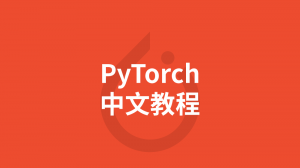PyTorch LSTM Word 语言模型上的(实验)动态量化
2025-06-23 11:58 更新
在自然语言处理任务中,模型的性能和效率至关重要。动态量化是一种有效的技术,可以减小模型尺寸、加快推断速度,同时对模型准确性影响较小。本教程将详细讲解如何在 LSTM Word 语言模型上应用动态量化。
一、模型定义
我们首先定义一个基于 LSTM 的语言模型,该模型包括编码器、循环模块和解码器。
import torch
import torch.nn as nn
import torch.nn.functional as F
class LSTMModel(nn.Module):
"""包含编码器、循环模块和解码器的容器模块。"""
def __init__(self, ntoken, ninp, nhid, nlayers, dropout=0.5):
super(LSTMModel, self).__init__()
self.drop = nn.Dropout(dropout)
self.encoder = nn.Embedding(ntoken, ninp)
self.rnn = nn.LSTM(ninp, nhid, nlayers, dropout=dropout)
self.decoder = nn.Linear(nhid, ntoken)
self.init_weights()
self.nhid = nhid
self.nlayers = nlayers
def init_weights(self):
initrange = 0.1
self.encoder.weight.data.uniform_(-initrange, initrange)
self.decoder.bias.data.zero_()
self.decoder.weight.data.uniform_(-initrange, initrange)
def forward(self, input, hidden):
emb = self.drop(self.encoder(input))
output, hidden = self.rnn(emb, hidden)
output = self.drop(output)
decoded = self.decoder(output)
return decoded, hidden
def init_hidden(self, bsz):
weight = next(self.parameters())
return (weight.new_zeros(self.nlayers, bsz, self.nhid),
weight.new_zeros(self.nlayers, bsz, self.nhid))二、数据预处理
我们将使用 Wikitext-2 数据集来训练和评估模型。首先,我们需要对数据进行预处理,包括分词和转换为张量。
class Dictionary(object):
def __init__(self):
self.word2idx = {}
self.idx2word = []
def add_word(self, word):
if word not in self.word2idx:
self.idx2word.append(word)
self.word2idx[word] = len(self.idx2word) - 1
return self.word2idx[word]
def __len__(self):
return len(self.idx2word)
class Corpus(object):
def __init__(self, path):
self.dictionary = Dictionary()
self.train = self.tokenize(os.path.join(path, 'train.txt'))
self.valid = self.tokenize(os.path.join(path, 'valid.txt'))
self.test = self.tokenize(os.path.join(path, 'test.txt'))
def tokenize(self, path):
"""对文本文件进行分词。"""
assert os.path.exists(path)
with open(path, 'r', encoding="utf8") as f:
for line in f:
words = line.split() + ['<eos>']
for word in words:
self.dictionary.add_word(word)
with open(path, 'r', encoding="utf8") as f:
idss = []
for line in f:
words = line.split() + ['<eos>']
ids = []
for word in words:
ids.append(self.dictionary.word2idx[word])
idss.append(torch.tensor(ids).type(torch.int64))
ids = torch.cat(idss)
return ids
model_data_filepath = 'data/'
corpus = Corpus(model_data_filepath + 'wikitext-2')三、加载预训练模型
为了应用动态量化,我们首先需要加载预训练的模型权重。
ntokens = len(corpus.dictionary)
model = LSTMModel(
ntoken=ntokens,
ninp=512,
nhid=256,
nlayers=5,
)
model.load_state_dict(
torch.load(
model_data_filepath + 'word_language_model_quantize.pth',
map_location=torch.device('cpu')
)
)
model.eval()
print(model)四、动态量化应用
使用 PyTorch 的 quantize_dynamic 函数对模型进行动态量化。
import torch.quantization
quantized_model = torch.quantization.quantize_dynamic(
model, {nn.LSTM, nn.Linear}, dtype=torch.qint8
)
print(quantized_model)五、性能评估
比较量化前后模型的大小和推断速度。
def print_size_of_model(model):
torch.save(model.state_dict(), "temp.p")
print('Size (MB):', os.path.getsize("temp.p") / 1e6)
os.remove('temp.p')
print_size_of_model(model)
print_size_of_model(quantized_model)测试模型的推断性能:
torch.set_num_threads(1)
def time_model_evaluation(model, test_data):
s = time.time()
loss = evaluate(model, test_data)
elapsed = time.time() - s
print('''loss: {0:.3f}
elapsed time (seconds): {1:.1f}'''.format(loss, elapsed))
time_model_evaluation(model, test_data)
time_model_evaluation(quantized_model, test_data)六、结果分析
通过动态量化,我们可以看到模型尺寸明显减小,推断速度显著提高,而模型的准确性几乎没有受到影响。在实际应用中,这种优化对于模型的部署和推理效率提升具有重要意义。
在编程狮(W3Cschool)平台上,你可以找到更多关于 PyTorch 模型优化和动态量化的详细教程和示例代码,帮助你深入理解和应用这些技术。
以上内容是否对您有帮助:

 免费 AI IDE
免费 AI IDE



更多建议: